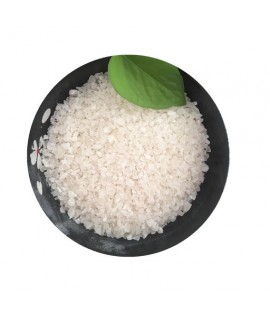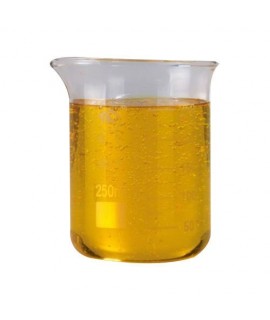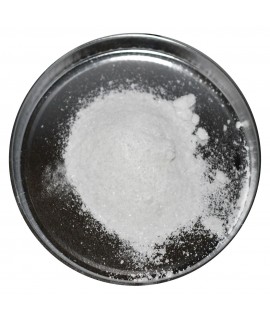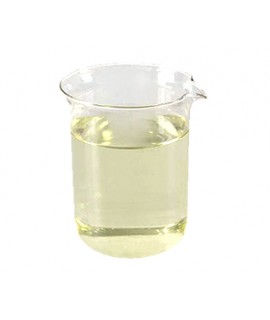ZINC OXIDE (zinc white), kg
3.19 €
Zinc white, CAS 1314-13-2, white pigment, INCI ZINC OXIDE, zinc white, calamine, philosopher's wool, Chinese white, flowers of zinc, CI 77947.
Parameters | Feature |
Zinc oxide | Zinc white, white pigment, calamine, philosopher's wool, Chinese white, zinc flowers, CI 77947 |
Formula | ZnO |
Structure |   |
IUPAC | Zinc oxide |
INCI | ZINC OXIDE |
CAS | 1314-13-2 |
Clay mass | 81.406 g/mol |
Density | 5.606 g/cm3 (crystal) |
Solubility | in water 0,0004 g/100 mL (20 °C) |
Zinc oxide is an inorganic compound with the chemical formula ZnO. There are many uses for zinc oxide powder, most of which use the reactivity of the material as a precursor for other zinc compounds. In materials science, zinc oxide is characterised by its high refractive index, high thermal conductivity, binding, antibacterial and UV protective properties. It is therefore added to materials and products including plastics, ceramics, glass, cement, rubber, lubricants, paints, adhesives, sealants, concrete production, pigments, foodstuffs, batteries, ferrites, flame retardants, etc.
In the rubber industry, between 50% and 60% of ZnO is used in the rubber industry. Zinc oxide is used together with stearic acid to vulcanise rubber. The ZnO additive also protects the rubber against fungi (see medical uses) and UV light.
Ceramics uses large amounts of zinc oxide, especially in ceramic glaze and frit compositions. The relatively high heat capacity, thermal conductivity and high temperature stability of ZnO, together with a relatively low coefficient of expansion, are desirable in ceramic production. ZnO influences the melting point and optical properties of glazes, enamels and ceramic compositions. Zinc oxide, as a low-expansion, secondary processing agent, improves the elasticity of glazes by reducing the temperature-dependent change in viscosity and helps to prevent tearing and cracking. Replacement of BaO and PbO by ZnO reduces heat capacity and increases thermal conductivity. The low zinc content improves the coating of glossy surfaces. However, at medium to high levels, matt and crystalline surfaces are produced. As regards colour, zinc has a complex influence which depends strongly on the surrounding materials.
In medicine, ZnO fine particles have deodorising and antibacterial properties and are therefore added to cotton cloth, rubber, oral care products and food packaging. The stronger antibacterial effect of fine particles compared to bulk material is not specific to ZnO and is observed for other materials such as silver. This property is due to the increased surface area of the fine particles. Zinc oxide is used in mouthwashes and toothpastes as an antibacterial agent to prevent the formation of plaque and tartar and to control bad breath by reducing the presence of volatile gases and volatile sulphur compounds (VSCs) in the mouth. These products also contain other active ingredients such as cetylpyridinium chloride, xylitol, quinokitiol, essential oils and herbal extracts, together with zinc oxide or zinc salts. Zinc oxide is widely used to treat a variety of skin conditions, including atopic dermatitis, contact dermatitis, itching due to eczema, nappy rash and acne. Zinc oxide is also often added to sunscreens. ZnO is a component of tape (called "zinc oxide tape"), which is used by athletes as a bandage to prevent soft tissue damage during training. Zinc oxide can be used in ointments, creams and lotions to protect against sunburn and other skin damage caused by ultraviolet rays.It is the broadest spectrum UVA and UVB absorber approved by the US Food and Drug Administration (FDA) for use as a sunscreen, and it is completely stable. Zinc oxide, used as a sunscreen ingredient, blocks both UVA (320-400 nm) and UVB (280-320 nm) ultraviolet rays. Zinc oxide and titanium dioxide are considered to be non-irritating, non-allergenic and non-comedogenic. However, zinc oxide results in some absorption of zinc into the skin. Many sunscreens use zinc oxide nanoparticles (in combination with titanium dioxide nanoparticles) because such small particles do not scatter light and therefore do not appear white. The nanoparticles are not absorbed into the skin any more than normal sized zinc oxide particles, and are only absorbed into the outer layer of the skin and not into the body. Zinc oxide nanoparticles may enhance the antibacterial activity of ciprofloxacin. It has been demonstrated that nano ZnO with an average size of 20 to 45 nm can enhance the antibacterial activity of ciprofloxacin against Staphylococcus aureus and Escherichia coli in vitro. The potentiating effect of this nanomaterial depends on the concentration of all test strains. This effect may be due to two reasons. Firstly, zinc oxide nanoparticles may interfere with the NorA protein, which is engineered to confer resistance to bacteria and has a pumping activity that mediates the efflux of hydrophilic fluoroquinolones from the cell. Secondly, zinc oxide nanoparticles can interfere with the Omf protein, which is responsible for the penetration of quinolone group antibiotics into the cell.
Zinc oxide is used as a component of cigarette filters. The filter, which consists of carbon impregnated with zinc oxide and iron oxide, removes large amounts of hydrogen cyanide (HCN) and hydrogen sulphide (H2S) from tobacco smoke without affecting its taste.
In the food industry, zinc oxide is added to many foods as a pigment (colouring agent), e.g. It is also used as a colouring agent, as a colouring agent in cheese, dairy products, including breakfast cereals, as a source of zinc. (Zinc sulphate is also used for the same purpose.) Some pre-packaged foods also contain traces of ZnO, even if it is not intended as a nutrient. Zinc oxide was linked to dioxin contamination in pork exports during the 2008 Chilean pork crisis. The contamination was found to be due to dioxin-contaminated zinc oxide used in pig feed.
Pigment. Zinc white is used as a pigment in paints and is opaque but less opaque than titanium dioxide. It is also used in paper coatings. China white is a special type of zinc white used in artists' pigments. Zinc white (zinc oxide) was introduced as a pigment in painting in the mid-18th century. It partially replaced the poisonous lead white and was used by artists such as Böcklin, Van Gogh, Manet, Munch and others. It is also the main ingredient in mineral make-up (CI 77947).
The UV-absorbing micronized and nanometric zinc oxide and titanium dioxide provide strong protection against UVA and UVB UV rays and are used in suntan lotions as well as UV-blocking sunglasses used in space, protective welding shields and jet engine laboratories.
In coatings, paints containing zinc oxide powder have long been used as anti-corrosion coatings for metals. They are particularly effective on galvanised iron. Iron is difficult to protect because its reactivity with organic coatings leads to brittleness and lack of adhesion. Zinc oxide paints retain their flexibility and adhesion to such surfaces for many years. ZnO doped with n-type aluminium, gallium or indium is transparent and conductive (transparency ~ 90%, minimum resistivity ~ 10-4 Ω - cm. ZnO:Al coatings are used for energy saving or thermal protection windows. The coating admits the visible part of the spectrum but either reflects infrared (IR) radiation back into the room (energy saving) or does not admit IR radiation into the room (thermal protection), depending on which side of the window the coating is applied. Plastics such as polyethylene naphthalate (PEN) can be protected by a zinc oxide coating. The coating reduces the diffusion of oxygen to the PEN. Zinc oxide layers can also be used for polycarbonate outdoors. The coating protects the polycarbonate from solar radiation and reduces its oxidation rate and surface yellowing.
In methane remediation, zinc oxide (ZnO) is used as a pre-treatment step to remove hydrogen sulphide (H2S) from natural gas by hydrogenating any sulphur compounds before the methane reformer, which can poison the catalyst. At temperatures of approximately 230-430°C (446-806°F), H2S is converted to water:
H2S + ZnO → H2O + ZnS
Once the zinc oxide is consumed, the zinc sulphide (ZnS) is regenerated into fresh zinc oxide.
Important: add the product to your basket, fill in the recipient's details and confirm your order. Thank you!
To save your precious time, we will deliver your order to the address you specify at your convenience !
*- Photographs of the goods may not reflect the actual appearance, colour, assembly or shape of the goods and their packaging. The information in the product description is general and may not correspond to the information on the product packaging. The information given about the stocks and prices of goods may, in some cases, differ from the actual prices and stocks of goods
Signal word: Caution |
Hazard icons:
|
Danger phrases: H410 Highly toxic to aquatic organisms, causing long-term effects. |
Precautionary phrases: P273 Keep out of the environment. P391 Collect leaking material. P501 Dispose of contents/container in accordance with local/regional/national legislation. |
Related products
(8 other products in the same category)











